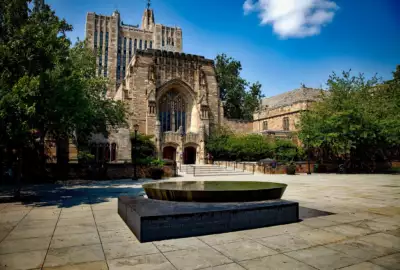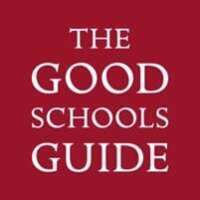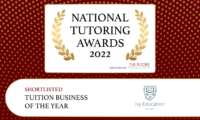Expert Insights
Free US College Admissions Timeline
Published 21st November 2025 by Alastair

Understand every stage of your UK university application — from Year 11 to UCAS submission
The US college admissions process can feel overwhelming: standardised tests, essays, supplemental questions, teacher recommendations, interviews, and a wide range of deadlines across different application types (EA, ED, RD, REA).
To make the process simple, we’ve created a Free US College Admissions Timeline, a one-page PDF that clearly outlines what to do and when—from Grade 10 to Grade 12.
This timeline gives students and parents a clear overview of every key stage of the US application journey, including when to shortlist colleges, begin essay work, prepare for interviews, and submit applications.
If you need guidance with your US College Admissions or SAT/ACT preparation, our expert consultants can support you at every stage.
Avoid missed deadlines: US colleges run Early Action/Early Decision rounds, Regular Decision, and supplemental deadlines.
Stay organised: The timeline shows when to work on testing, essays, recommendations, and activities.
Maximise competitiveness: Starting early strengthens your academic and extracurricular profile.
Perfect for parents and advisors: Helps guide students through a multi-year, multi-component process.
Reduce stress: Know exactly what’s coming next and how to prepare for it.
This is the ideal moment to start thinking about whether the US system is the right fit for you. At this stage, students typically:
Explore the differences between US and UK admissions (holistic review, majors vs courses, campus culture).
Identify potential academic interests or majors.
Begin thinking about college types: liberal arts colleges, research universities, Ivy League, large publics, etc.
This early exploration makes it much easier to plan your academics and activities strategically.
The summer before Grade 11 is the perfect time to:
Take diagnostic SAT/ACT tests to see which exam suits you best.
Begin structured standardised test preparation.
Start or deepen extracurricular and enrichment activities (clubs, competitions, volunteering, research, summer programmes).
This is also when many students begin building a more formal academic CV and, where relevant, developing an impactful leadership or passion project.
During Grade 11, you’re laying the academic and extracurricular foundations that US colleges will scrutinise most closely:
Continue SAT/ACT prep and aim to sit at least one official test.
Maintain or improve strong grades — Grade 11 results are particularly important.
Develop leadership roles (e.g. captaining a team, leading a club, launching an initiative).
Begin rough college shortlisting: location preferences, campus type, academic strength, selectivity.
This is also a key moment to consider targeted mentoring around CV & project development if you’re building something distinctive.
By spring of Grade 11, it’s time to make your plan for senior year applications:
Confirm a balanced college list with a good mix of reach, match, and safety schools.
Decide which teachers you may approach for letters of recommendation.
Brainstorm essay themes for your Common Application Personal Statement.
Plan ahead for summer essay work, so you’re not overwhelmed during Grade 12.
This is also a good stage to refine your shortlist with professional input and ensure it matches your academic profile and ambitions.
2.5This is one of the most important windows in the entire process:
Finalise your Common App Personal Statement (main essay).
Begin working on supplemental essays for your shortlisted colleges.
Schedule college visits where possible — either in-person or virtual.
Start interview preparation, including mock practice and discussion of typical questions.
Completing as much essay work as possible in the summer frees up valuable time once school starts again.
2.6The final school year is when everything comes together:
Early Action/Early Decision applications are typically submitted from October to November.
Regular Decision applications are usually due between late December and early January.
Continue refining and finalising supplemental essays.
Keep up your academic performance — offers can depend on maintaining your trajectory.
Many families find that having dedicated application management support at this stage helps keep track of forms, essays, deadlines, and testing requirements across multiple colleges.
From March onwards, colleges begin to release decisions:
Admissions decisions are typically released from March to April.
You may need to compare offers and financial packages, or navigate waitlists and deferrals.
By early May, you’ll usually need to select your college and confirm your enrolment.
Post-acceptance support can help you evaluate your options, respond to offers strategically, and prepare for the transition to university life.
Work with an expert US University Admissions Consultant to create a clear, tailored strategy for your applications, from test planning and college shortlisting to essays and interviews.
You can also download a FREE visual version of this timeline as a one-page PDF below.
| Stage | Typical Timeframe | What Happens |
|---|---|---|
| Explore US admissions & long-term goals | Spring – Grade 10 (Year 11) | Learn about US vs UK systems; identify academic interests and college types |
| Start SAT/ACT diagnostics & extracurricular development | Summer – before Grade 11 (before Year 12) | Take diagnostic tests; begin test prep; join programmes; start CV-building |
| Strengthen academic profile & leadership experience | Fall – Grade 11 (Year 12) | Continue test prep; focus on grades; build leadership and passion projects |
| Plan essays, recommendations & college list | Spring – Grade 11 (Year 12) | Finalise a balanced college list; plan recommendations; brainstorm essay ideas |
| Draft personal statement & supplemental essays | Summer – before Grade 12 (before Year 13) | Write and refine the Common App essay; start on supplemental essays; prepare for interviews |
| Submit Early Action/Early Decision applications | Oct–Nov – Grade 12 (Year 13) | Submit early applications; complete remaining testing if needed |
| Submit Regular Decision applications | By January – Grade 12 (Year 13) | Finalise and submit the majority of applications |
| Decisions released & enrolment preparation | March–April – Grade 12 (Year 13) | Receive decisions; compare offers; choose a college and prepare for enrolment |

Whether you’re just starting to explore US colleges in Grade 10 or finalising your list in Grade 12, planning ahead is essential.
Use the downloadable timeline as your roadmap from Grade 10 through Grade 12 so that no deadline, requirement, or opportunity passes you by.
If you’d like extra guidance, our expert US University Consultants can support you at every step, from choosing colleges and planning testing to crafting compelling essays and preparing for interviews.
Ready to take the next step? Contact our team to start planning your US college journey today.
Most students start planning in Grade 10 (Year 11). This gives you plenty of time to understand the US system, consider potential majors, and begin developing a strong academic and extracurricular profile before test prep and applications begin in earnest.
Students usually begin diagnostic testing and light preparation in the summer before Grade 11, then sit official exams between spring of Grade 11 and autumn of Grade 12. This timing leaves room for a retake if needed, while avoiding a last-minute rush during application season.
Most US colleges:
Open applications in late summer before Grade 12, and
Set Early Action/Early Decision deadlines in October–November, with Regular Decision deadlines typically falling between late December and early January.
Exact dates vary by institution, so it’s important to check each college’s admissions page.
We recommend drafting your Common App Personal Statement in the summer before Grade 12. This gives you time to reflect on your experiences, write multiple drafts, and seek feedback before you turn to supplemental essays and schoolwork in the autumn.
Download and use our Free US College Admissions Timeline (PDF) to visualise each stage of the process. It highlights key milestones, from early test prep and essay work to final decisions, so you always know what comes next and when to act.
Many highly selective universities and Ivy League schools follow the same broad EA/ED and RD windows, but they can have additional requirements:
More extensive supplemental essays
Alumni or admissions interviews
Recommendations and school reports that need earlier coordination
Because of this, students aiming for the most competitive universities benefit from starting earlier in Grade 11 and using the summer before Grade 12 very effectively.
If your outcomes aren’t what you expected, there are still options:
Reviewing deferral or waitlist strategies
Comparing offers and considering financial packages
Exploring alternative routes such as transfer pathways or gap years
Our US Admissions Consultancy team can help you evaluate your choices, make appeals where appropriate, and plan a strong next step.











